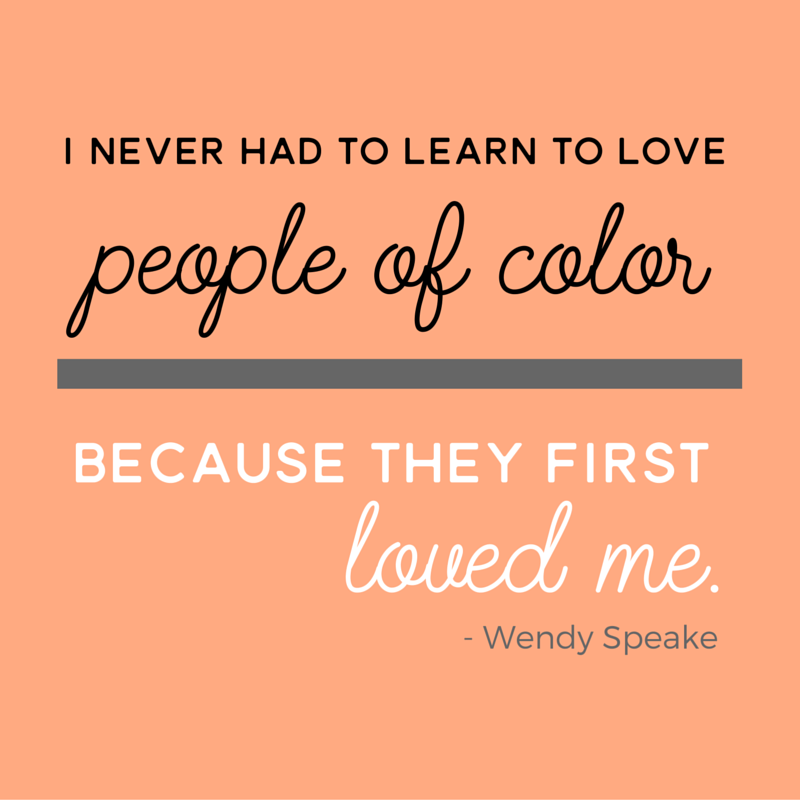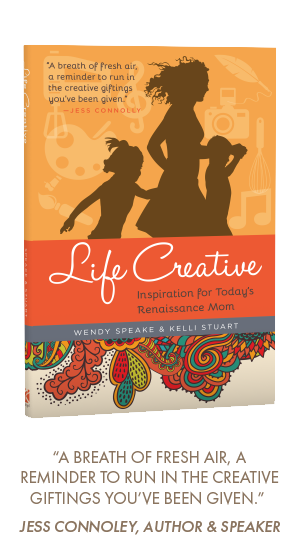Healing race relations in the everyday ordinary
/I never had to learn to love people of color because they first loved me. Back in 1990 I went to the Los Angeles County High School for the Arts (LACHSA.) Every student that walked those halls wanted to be there. It was a privilege and a commitment. Our days started early, as we all took multiple freeways, commuting in from all over the county. And we stayed late, rehearsing Shakespeare on the lawn. We were actors, instrumentalists and singers, dancers and visual artists. Long and lean black men, with jazz shoes hung over their broad shoulders; Russian and Chinese immigrants carrying violin cases and heavy backpacks; visual artists with their hair dyed blue, portfolios tucked under their arms. We were a hodgepodge of inspired, self-expressing youth. But the overarching theme of our student body was inclusivity.
There were no minority groups among us because there wasn't a majority of any one race. We were diversified, and therefore unified.
My years at LACHSA shaped the way I view race relations today, more than any other single season or singular event in my life.
During my Sophomore year I joined the Student Coalition on campus. Our peer leaders were hippies, mostly the visual artists with a few female dancers who had dreadlocks and didn't shave their legs. It was the year we marched downtown to celebrate anti-apartheid leader, Nelson Mandela's release from prison. We carried banners and chanted, "United we stand - Divided we fall." It was the first time I smelled pot.
I wore a tee-shirt that displayed Mandela's face. It looked like a piece of art by Andy Warhol, decorated in bright Rastafarian colors.
At the Coliseum later that day Nelson Mandela charged us, "We who have suffered and continue to suffer the pain of oppression know that underneath that face of Los Angeles lies the great and noble spirit of the citizenry. We who fight for human rights know the depths of the human spirit running through the hills and valleys of the state of California."
My eyes pricked with tears because I felt so deeply for the suffering of others throughout the city, the nation, and across the globe to South Africa. I purposed then and there to join the fight, though the attack was not against me. It was clear to me that day, and remains so to this day, that when a human hurts due to injustice, we should all hurt.
That was the year I also joined my friends in The Black Student Union. Looking back I don't exactly know why they let me in - though I wasn't the only white person in the room. We sang, "Freedom - Oh, let Freedom ring," then ate our lunches together each Thursday.
On the day of the LA riots in 1992, we were all called into one of the larger classrooms and told what was happening. We were asked to stay on campus, but not held there against our will. My mom's office was downtown, near the building that had been taken over by law enforcement. No one was picking up the phone at her work, and she wasn't answering at home either. I sat with a group of students, in a circle of classroom desks. I sought them out specifically because they were the only Christians I could find in the room. And we together prayed. They were all black, save one Asian girl and a blond hair, fair skinned white boy, and me. We held hands and prayed for a long time, and then I snuck away.
I drove the 10 freeway home, with smoke billowing up from fires on both sides of the road. Exiting the highway close to my home I crossed the intersection where Reginald Denny would be pulled from his truck and beaten less than an hour later. I knew that these riots were in response to the Rodney King verdict, where all four police officers were acquitted when the jury couldn't reach a verdict.
Maybe that's why I'm thinking of all these things today.
That night, once my mom had returned home, we watched the news and saw protesters shouting, "No justice, no peace."
Yes, that's why I'm thinking of these things today.
I've sent out multiple messages to multiple friends of color in the past 48 hours, two of them are from my days at LACHSA. I asked them what I could do to help heal race relations. I told them that I am personally committed to loving all of my neighbors, "red and yellow, black and white," but both of them said that wasn't enough. Both of them asked me to share my thoughts publicly, because I have a different readership, a different platform than they do.
Carvell and Diana both agreed that loving one another in the private places of our lives and relationships is crucial, but that's interpersonal and this topic is institutional.
I'm not sure, exactly, what that means, truthfully. I've never been a very political girl, except that day at the LA Coliseum wearing my Mandela shirt. I've only ever known racial healing on an interpersonal level. Like this afternoon when Jimmy, the UPS man, walked up to my house and I threw the door open and hugged his neck and cried, "I'm so glad you're here, I needed to hug a black man today."
I kid you not. He smiled and we prayed together.
I want to keep learning, keep marching, keep shouting publicly, "United we stand, divided we fall."
Because, when it all comes down to it, no matter the skin color, we all bleed red. Isn't that what we've discovered more than all else these past 48 hours? And back in March of 1992. We all bleed red.
But the only red blood that can ever truly restore us to one another is the reconciling blood of Jesus, who came to make all things right again.
[Tweet "when it all comes down to it, no matter the skin color, we all bleed red..."]
We love, because He first loved us. (1 John 4:19)





